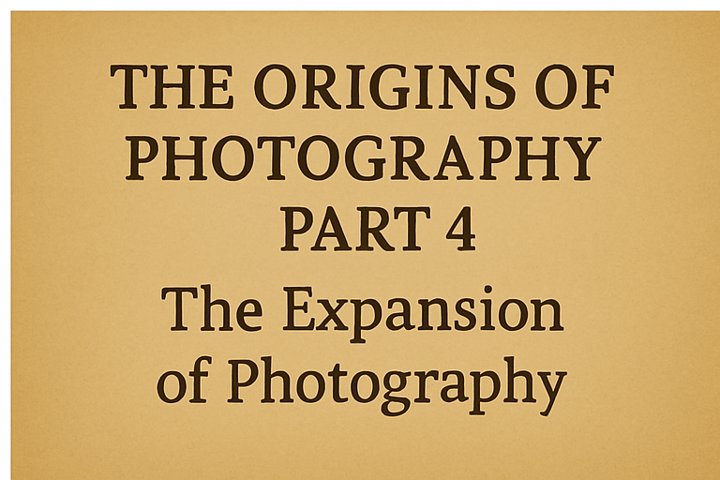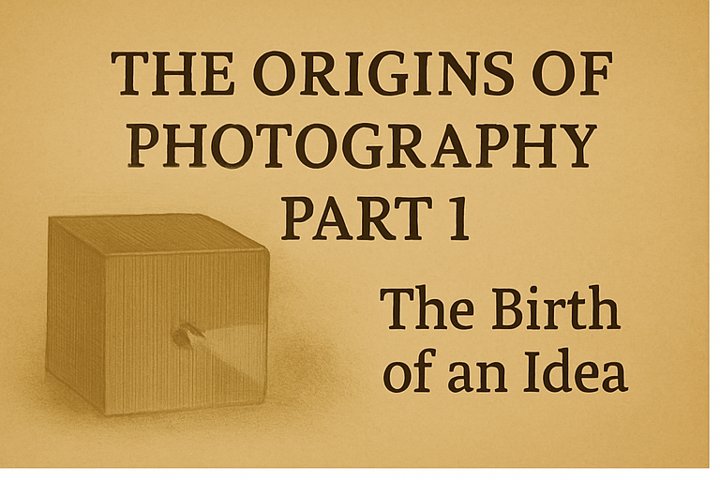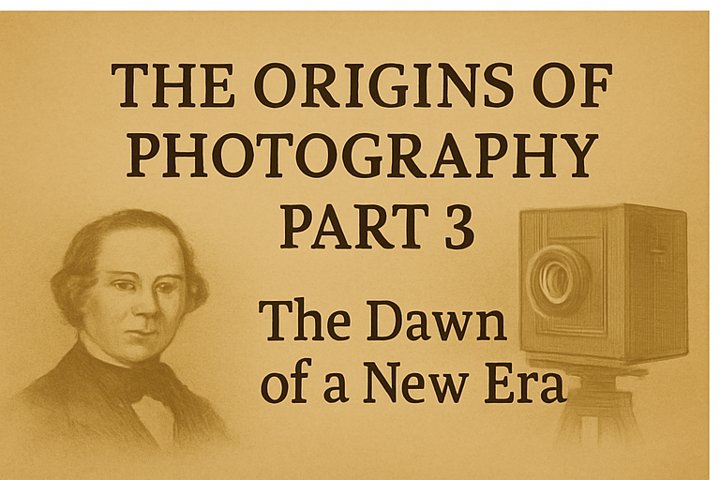The Origins of Photography – Part 4
The Expansion of Photography:
Glass Plates, Colour Dreams, and Global Reach
Introduction
By the mid-1800s, photography was no longer a rare experiment. It had become a profession, a passion, and a means of recording the world. The daguerreotype and calotype laid the foundation, but new inventions would soon make photography faster, sharper, and more shareable.
This era brought clarity — not only in the images themselves, but in photography’s purpose. It became a bridge between science and society, between the intimate and the universal.
The Collodion Revolution
In 1851, Frederick Scott Archer introduced the wet collodion process, a breakthrough that replaced both the daguerreotype and the calotype. By coating a glass plate with collodion and sensitising it just before exposure, photographers could achieve remarkable sharpness and detail.
However, there was a challenge: the plate had to remain wet throughout the entire exposure and development process. That meant carrying chemicals, a portable darkroom, and working quickly before the plate dried.
Despite the difficulty, the collodion method became the standard for decades. It made portraits, landscapes, and documentary photography more accessible — and more vivid.
Mindful reflection: The wet plate process reminds us that creativity often lives inside constraints. Each image demanded patience, preparation, and presence — much like mindful photography today.
Tintypes and Ambrotypes: Photography for Everyone
Soon came two accessible variations of the wet collodion method:
- Tintypes (ferrotypes): made on thin iron plates, inexpensive and durable, popular at fairs and with travelling photographers.
- Ambrotypes: made on glass and viewed against a dark background, giving a delicate, almost luminous quality.
These methods brought photography to the everyday person. Portraits were no longer a privilege of the wealthy — anyone could afford a likeness.
Viewer’s insight: In each tintype and ambrotype, there’s a trace of pride, stillness, and connection. They are not just faces but fragments of presence, fixed in time.
The Birth of Studio Culture
By the 1860s, photography studios had become part of nearly every city. Backdrops, props, and careful lighting turned portraits into statements of identity. Sitting for a photograph became a ritual — a moment of stillness in an increasingly fast-moving world.
For mindful photographers today, there’s something to learn here: that the image begins long before the shutter — in the atmosphere, posture, and shared calm between subject and photographer.
From Glass to Gelatin: Dry Plates and the Move Toward Ease
In the 1870s, the dry plate process changed everything. Instead of requiring wet plates and portable darkrooms, photographers could now use pre-coated glass plates with gelatin emulsions that stayed sensitive for months.
This innovation made photography far more practical and portable. It also paved the way for smaller cameras — and eventually, for roll film.
Viewer’s insight: The dry plate freed photographers to focus less on chemistry and more on vision. Each advancement in convenience expanded the creative horizon.
Early Colour Experiments
Even as black-and-white photography matured, the dream of colour persisted. Scientists such as James Clerk Maxwell experimented with additive colour photography as early as 1861, using red, green, and blue filters. Though imperfect, these early trials planted the seeds for the colour processes of the 20th century.
The first colour photograph — of a ribbon — was fragile, but it hinted at something profound: that the full spectrum of light could one day be preserved.
Mindful reflection: Colour in photography is not merely visual; it’s emotional. Those first faint hues remind us that every creative journey begins in subtle tones before reaching full expression.
Photography Goes Global
By the late 1800s, photography had spread across continents. Explorers documented landscapes, architects recorded buildings, and families captured moments of everyday life.
Photography became a language — universal, silent, and immediate. It allowed people to see the world through others’ eyes, long before film or television would do the same.
Closing Reflection
This period marks the moment photography truly belonged to everyone. It was no longer bound by laboratories or studios — it travelled, it recorded, it connected.
As photographers today, we inherit that spirit. Every time we raise the camera, we echo the same curiosity that drove those pioneers. Photography continues to evolve, but its essence remains unchanged: to observe, to feel, and to remember.
The Origins of Photography Series
Part 1: The Birth of an Idea
Part 2: Photography Finds Its Voice
Part 3: The Dawn of the Commercial Era
Part 4: The Expansion of Photography
More parts coming soon.
Previous part ← Part 3: The Dawn of the Commercial Era
More parts coming soon.






